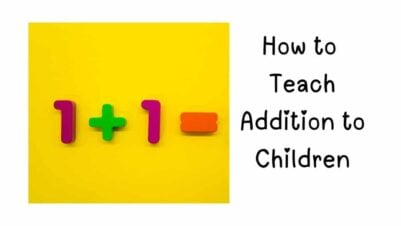 Addition is combining two or more numbers together to get a new total and is one of the four basic arithmetic operations alongside subtraction, multiplication, and division. The exercise below can be used to teach addition to children. Copyright 2024: Edublox (Pty) Ltd.
Addition is combining two or more numbers together to get a new total and is one of the four basic arithmetic operations alongside subtraction, multiplication, and division. The exercise below can be used to teach addition to children. Copyright 2024: Edublox (Pty) Ltd.
.
Materials required:
• Blocks or buttons of the same color.
• Two plates or shallow containers.
• Adding flashcards (see PDF file below)
.
Description:
The tutor and learner sit opposite each other at a table.
The tutor puts the first flashcard, 1 + 1, in front of the learner and asks, “What does the card say?” The learner must answer, “One plus one.” The tutor will ask the learner, “Take the blocks and show me what one plus one looks like with blocks.”
Seen from the learner’s side, he must arrange the blocks as follows:
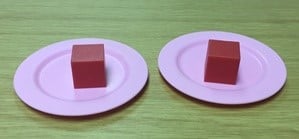
The tutor asks, “What is the answer?” to which the learner must say, “Two.”
The tutor puts the next flashcard, 1 + 0, in front of the learner and asks, “What does the card say?” The learner must answer, “One plus zero.” The tutor will ask the learner, “Take the blocks and show me what one plus zero looks like with blocks.”
Seen from the learner’s side, he must arrange the blocks as follows:
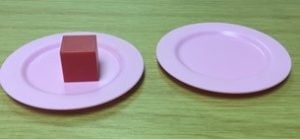
The tutor asks, “What is the answer?” to which the learner must say, “One.”
The tutor puts the next flashcard, 2 + 2, in front of the learner and asks, “What does the card say?” The learner must answer, “Two plus two.” The tutor will ask the learner, “Take the blocks and show me what two plus two looks like with blocks.”
Seen from the learner’s side, he must arrange the blocks as follows:
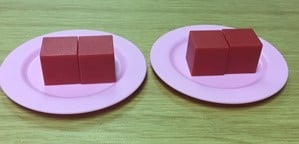
The tutor asks, “What is the answer?” to which the learner must say, “Four.”
The tutor puts the next flashcard, 2 + 1, in front of the learner and asks, “What does the card say?” The learner must answer, “Two plus one.” The tutor will ask the learner, “Take the blocks and show me what two plus one looks like with blocks.”
Seen from the learner’s side, he must arrange the blocks as follows:
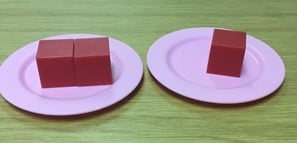
The tutor asks, “What is the answer?” to which the learner must say, “Three.”
If the learner gives a wrong answer, the tutor will help the learner find the correct answer through leading questions.
The tutor will continue until she has the first six flashcards in her hand.
The tutor shuffles the six cards, puts the first one down on the table, and immediately covers it with her hand. The action of putting the flashcard on the table and covering it with one’s hand should be quick.
With her hand covering the flashcard, the tutor waits for the learner to say the answer.
She then puts the next card in front of him in the same way and waits for him to answer, followed by the third, fourth, fifth, and sixth flashcards.
If the learner cannot give a correct answer, or if he answers hesitantly, she must put the card(s) in question aside so that it (they) can be drilled later. To drill, she puts the flashcard(s) (one at a time) in front of the learner and asks, “What is the answer?” She drills it (them) over and over until he can say the answer(s) fluently. If needed, the learner can again use blocks to illustrate an equation.
The six flashcards are shuffled, and the process is repeated.
If, or as soon as the learner can say the answers to the six flashcards correctly and without hesitation, two more flashcards are added, and the process starts all over again:
1.) Two more flashcards are added
The tutor puts the new flashcard, 3 + 2, in front of the learner and asks, “What does the card say?” The learner must answer, “Three plus two.” The tutor will ask the learner, “Take the blocks and show me what three plus two looks like with blocks.”
The learner illustrates 3 + 2 with blocks, and the tutor asks, “What is the answer?” to which the learner must say, “Five.” Etc.
2.) The tutor shuffles the eight cards, puts them down one after the other on the table, and immediately covers them with her hand.
If the learner cannot give a correct answer, or if he answers hesitantly, she must put the card(s) in question aside so that it (they) can be drilled later. To drill, she puts the flashcard(s) (one at a time) in front of the learner and asks, “What is the answer?” She drills it (them) over and over until he can say the answer(s) fluently. If needed, the learner can again use blocks to illustrate an equation.
3.) If (or as soon as) the learner can answer the eight flashcards correctly and without hesitation, two are added.
In this way, the tutor must work through all the flashcards.
.
